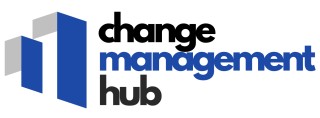
Understanding the Role of a Corrective Action Report
Importance of Understanding Corrective Action Reports
In the realm of quality management, a corrective action report serves as a vital tool for identifying issues, implementing solutions, and preventing the recurrence of problems. These reports are not only crucial in addressing immediate concerns but also play a key role in longer-term continuous improvement. Corrective action reports help organizations address the root cause of a problem through a structured process. This involves thorough root analysis, allowing management to not only tackle the symptoms of the problem but also ensure that the core issues are resolved effectively. The benefits of such reports extend beyond simple problem solving; they lay the groundwork for an effective action plan that prevents similar issues from arising in the future. From a compliance perspective, many standards, particularly ISO standards, mandate the use of corrective and preventive actions. Thus, crafting an effective corrective action report is not just about maintaining quality; it also helps in meeting regulatory requirements. In industries such as medical device manufacturing, where quality assurance is critical, the effectiveness of these reports can directly impact product safety and customer satisfaction. When used strategically, corrective action reports contribute to the development of a culture focused on quality and continuous improvement. By encouraging organizations to identify and remedy issues promptly, these reports support both operational efficacy and strategic goals. For a deeper dive into creating a comprehensive management plan that complements these reports, consider exploring effective change management plans.Key Components of a Corrective Action Report
Essential Elements of a Comprehensive Report
Crafting an effective corrective action report is fundamental in ensuring quality management and continuous improvement. Each report car must be concise yet comprehensive, providing a clear overview of the identified problem and the steps necessary to address and prevent recurrence. Below are key elements that should be included:- Problem Identification: Clearly define the issue or deviations that triggered the need for a corrective action report. Root analysis is essential here to understand the underlying causes and to prevent similar issues in the future.
- Root Cause Analysis: Conduct a thorough root analysis to determine why the issue occurred. This step is crucial for identifying possible preventive actions and ensuring that corrective measures effectively rectify the problem.
- Action Plan Development: Develop a detailed action plan that outlines the corrective actions to be taken. This should include timelines, responsibilities, and resources required to implement the actions effectively.
- Implementation of Corrective Actions: Describe the corrective and preventive actions to be taken, detail the steps necessary to implement these measures, and note any anticipated challenges.
- Effectiveness Evaluation: Once the corrective measures are in place, regularly monitor their effectiveness to ensure the issue has been resolved fully and no recurrence happens. This helps in assessing the success of the corrective preventive
- Continuous Improvement Focus: Ensure that the action report contributes to continuous improvement in the organization's processes, aligning with ISO standards and quality management frameworks.
Common Challenges in Implementing Corrective Actions
Identifying Challenges in Executing Actions
As organizations strive to improve quality management and prevent recurrence of issues, implementing corrective actions effectively can present several challenges. These hurdles often hinder the successful execution of a corrective action plan, impacting the overall action process and report outcomes. In this section, we'll delve into the common obstacles faced and provide insights into overcoming them.
Communication Breakdowns
One prevalent issue is the failure to communicate both the problem and solutions effectively across teams. When stakeholders do not understand the root analysis or preventive action plan, it can lead to confusion and delays in taking steps, affecting the overall effectiveness of the corrective action. Organizations must ensure that communication channels are clear and concise, facilitating an accurate exchange of information, which is crucial in the corrective action report process.
Lack of a Concrete Template
Inconsistent use of corrective action templates can lead to discrepancies and missed details. The absence of a standardized corrective action report car template can cause variations in data collection, making it difficult to track progress and measure the success of the corrective actions. Adopting a unified template for ISO compliance not only enhances the quality of reporting but also streamlines the management and implementation of actions.
Insufficient Root Analysis
Identifying the root cause of an issue is pivotal in creating effective corrective and preventive actions. However, organizations often rush this step, resulting in inadequate analysis. This oversight can lead to repetitive problem-solving efforts because the true cause of the issue is not addressed. A thorough root cause analysis is a critical step to prevent recurrence and should not be overlooked in the problem-solving process.
Ensuring Continuous Improvement
Continuous improvement is the goal of implementing corrective actions, yet, ingraining it into the organizational culture can be challenging. Overcoming resistance to change is essential, as outlined in the changing management dynamics, to ensure these actions become integrated into daily operations. Management must champion the need for continuous improvement to reinforce the importance of corrective actions and encourage proactive behavior.
Evaluating Effectiveness Corrective
Another challenge lies in effectively evaluating whether the action plan yields the desired results. Without a system in place to monitor the outcomes from the corrective actions, organizations struggle to verify the actions' effectiveness. Establishing metrics and conducting periodic reviews help in assessing the success of the action plans and aligning them with overall quality management objectives.
Best Practices for Writing a Corrective Action Report
Crafting an Exceptional Action Plan
Creating a successful corrective action report begins with formulating a comprehensive action plan. This plan is pivotal to the report's success, ensuring that every step taken addresses the root cause effectively. By prioritizing a definitive action strategy, organizations can streamline the process of implementing corrective measures.- Identify the Problem: Start by clearly identifying the issue at hand. This step involves conducting a root analysis to determine the underlying causes of the problem. A precise problem identification sets the foundation for all subsequent actions.
- Action Process and Planning: Develop a detailed action process that outlines each step necessary to achieve the corrective actions. Having a structured action plan ensures that all team members understand their roles and responsibilities, facilitating seamless execution.
- ISO Standards Compliance: Align your action report with ISO standards, where applicable. This ensures that the corrective and preventive actions adhere to recognized quality management practices, especially crucial in regulated industries such as medical devices.
- Template Utilization: Leverage action report templates to maintain consistency and comprehensiveness in documentation. A standardized format helps in tracking each step, ensuring that no critical component is overlooked.
- Preventive Actions: While addressing immediate issues, it's imperative to incorporate preventive actions into your plan. This foresight prevents recurrence and fosters continuous improvement in quality management.
- Effectiveness Evaluation: Regularly assess the effectiveness of the corrective measures implemented. This requires a process of ongoing analysis to verify whether the actions taken have satisfactorily resolved the problem.
Case Studies: Successful Corrective Action Reports in Change Management
Illustrative Examples of Effective Action Reports
In the realm of change management, crafting a corrective action report that leads to successful outcomes is both an art and a science. Real-world applications can offer valuable insights into the process and effectiveness of these reports. Consider a manufacturing organization facing repeated product quality issues due to a key equipment malfunction. The organization utilized a detailed corrective action report to not only address the immediate concerns but also to identify the root cause of the problem through thorough root analysis. The report outlined a comprehensive action plan that included preventive actions such as scheduling regular equipment maintenance and training staff on new operational protocols. By focusing on continuous improvement and the effectiveness of the corrective actions, they were able to prevent recurrence of the issue and enhance overall quality management. Another example comes from a medical device company that encountered non-compliance with certain ISO standards during an audit. The organization implemented a corrective action process using established templates to ensure uniformity and effectiveness in their response. The action report identified the gaps, outlined step-by-step actions to address each issue, and took preventive measures to avoid future non-compliance. This systematic approach not only resolved the existing issue but also fortified their systems against potential future audits. Both cases underline the importance of having an effective corrective action system in place. The successful outcomes highlight the significance of a well-structured action report car and a commitment to quality management. Such reports are pivotal in implementing corrective and preventive measures effectively, thereby supporting organizations in their journey towards excellence.Future Trends in Corrective Action Reporting
Emerging Trends in Corrective Action Reporting
In the realm of change management, corrective action reports are evolving in response to advancements in technology and methodologies. The future of corrective action reporting is increasingly shaped by several key trends that enhance the effectiveness and efficiency of action reports.- Digital Transformation and Automation: As organizations continue to embrace digital transformation, there is a growing trend towards automating corrective action processes. Leveraging software solutions streamlines the report generation, action plan execution, and monitoring of outcomes, thus ensuring a more agile response to issues.
- Data-Driven Decision Making: The integration of advanced data analytics allows for a deeper root analysis of problems. By extracting actionable insights from data, businesses are better equipped to identify root causes and deploy effective corrective and preventive actions.
- Collaborative Tools and Platforms: The implementation of collaborative platforms facilitates seamless communication and coordination among teams involved in corrective actions. This not only enhances the quality management process but also accelerates the resolution of issues.
- Emphasis on Continuous Improvement: Organizations are increasingly embedding a culture of continuous improvement within their corrective action frameworks. This proactive approach prevents recurrence of issues and promotes ongoing enhancement of quality standards.
- Focus on Preventive Actions: Alongside corrective measures, there's a heightened focus on developing robust preventive actions. By refining the action process to address potential problems before they arise, companies can maintain operational stability and quality assurance.













